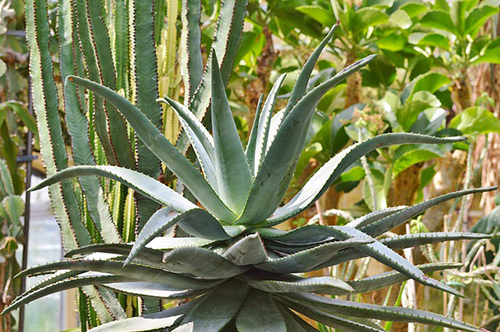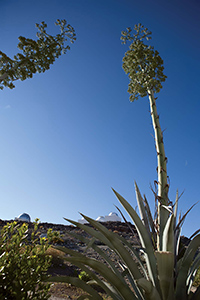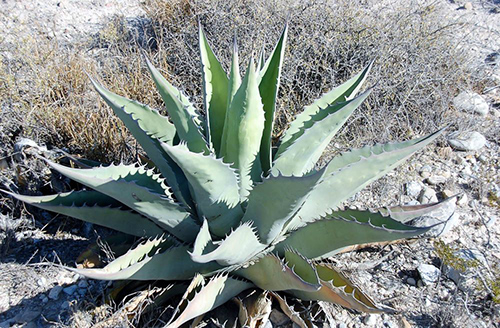Contents
More than 150 agave plant species are known, each similar in appearance and properties. They’re spread all over Mexico and Central America. Ancient Aztecs once used these plants for medicinal purposes. They were introduced to Spain in the 16th century and quickly spread over the Mediterranean coastline.
A fiber used to make ropes is obtained from the agave plant and similar species. The fleshy leaves of some agave species growing in Mexico produce a sweet sap or maguey juice, from which several alcoholic beverages are made. These beverages are dangerous because of their high alcoholic content: pulque, tequila, and mescal.

Agave Plant Scientific Facts
- Other names: Century plant, American agave, American century, flowering aloe, spiked aloe.
- French: Agave d’Amerique
- Spanish: Agave.
- Environment: Native to Central America, it grows in semi-arid, elevated soils. It is extensively cultivated in the Oaxaca Valley (Mexico), and it has been naturalized in Mediterranean countries, where it grows in parks and gardens as an ornamental plant.
- Description: This is a plant of the Amaryllidaceae family. It has large, fleshy, point-tipped, spiked basal leaves (up to one meter large). Its flowers grow on the tip of a 6 m high stem.
- Parts of the plant used medicinally: The root, the leaves, and the sap.
Healing Properties and Uses

All plants of the agave genus contain steroid glycosides, among which the most outstanding are hecogenin and saponins. The root and the leaves obtain their diuretic and blood depurative properties from these substances and are successfully used for edema and retention of liquids.

In Mexico and Central American countries, agave is traditionally used for infectious diseases, digestive disorders, jaundice, and hepatitis. Externally applied, the juice or sap flowing from the stem has vulnerary and wound-healing properties. It is used in compresses for bruises and skin wounds.
How to use Agave
- Infusion with 30 grams of root or ground dry leaves per liter of water. Drink three or four cups daily, sweetened with honey.
- Compresses with the juice or sap of the leaves are applied to the affected skin area.
DISCLAIMER: All content on this website is presented solely for educational and informational objectives. Do not rely on the information provided as a replacement for advice, diagnosis, or treatment from a qualified medical expert. If you are pregnant, nursing, or have any preexisting medical concerns, talk to your doctor before using any herbal or natural medicines.
REFERENCES
- George D. Pamplona-Roger, M.D. “Encyclopedia of Medicinal Plants.” George D. Pamplona-Roger, M.D. Encyclopedia of Medicinal Plants. Ed. Francesc X. Gelabert. vols. 2 San Fernando de Henares: Editorial Safeliz, 2000. 558. Print.[agave plant]
- WebMD: https://www.webmd.com/diet/agave-health-benefits
- Healthline: https://www.healthline.com/nutrition/agave-nectar-is-even-worse-than-sugar
